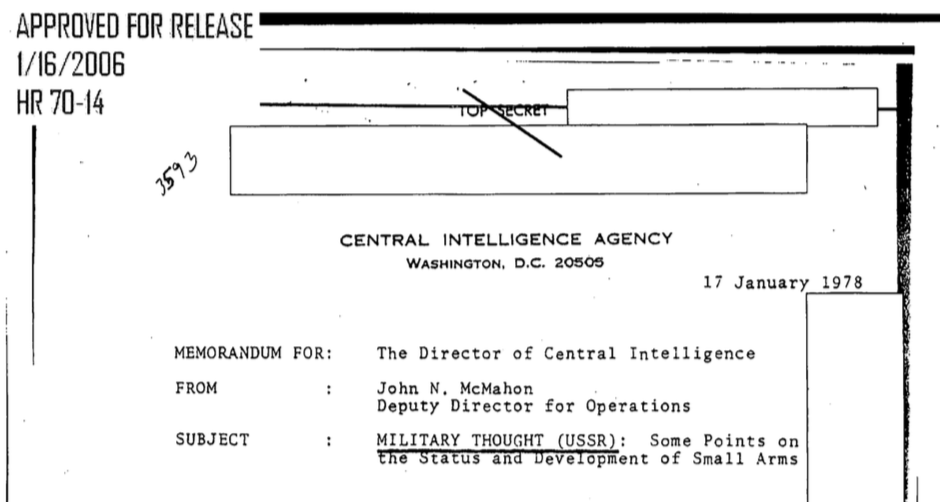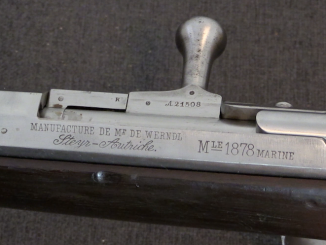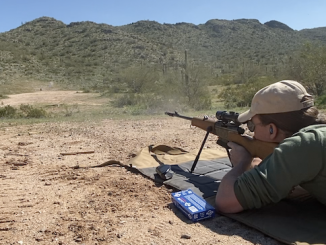Preorders now open for my book, Chassepot to FAMAS: French Military Rifles 1866-2016! Get your copy here!
After the disaster of the Franco-Prussian War, it was clear to the French military that the rationale for using paper cartridge in the Chassepot was no longer valid – a future rifle would need to use brass cartridges. A competition to design a conversion of the Chassepot to use modern ammunition resulted in the 1874 adoption of the rifle designed by French Artillery Captain Basile Gras. This maintained the use of the bolt handle as a single locking lug, but introduced a separate bolt head and extractor. The new cartridge was the 11mm Gras; very similar to the Chassepot loading but at a slightly higher velocity.
The Gras would be produced from 1874 until 1884, with more than 4 million made in total. Most were full length infantry rifles, but two patterns of carbine and a musketoon were also included for cavalry, gendarmerie, and artillery troops. These rifles saw significant use in colonial conflicts, but the much-anticipated war of revenge against Germany would not happen while the Gras was the standard French rifle. Instead, it would see a supporting role in the First World War, both in the original 11mm caliber and also converted to 8mm Lebel.




Cool video on an interesting weapon.
BTW, your french pronounciation is getting better and better.
Mousqueton was spot on, as well as gendarmerie. Although ”pied’ as in ”gendarmerie à pied” would sound more as if you said the two letters P A (peehay, the d is silent.
Does anybody make 11 mm Gras ammo? It would be just too dang cool to see these old irons belching fire again — and I for one would admire to see how well they grouped at 100 meters. (Never mind about 500 or 600 meters, unless you can rig up a VERY large witness sheet.)
Unprimed cases;
https://www.buffaloarms.com/11x59r-french-gras-cases-bertram-formed-box-of-20-ber11x59r
As for reloading die sets, some custom maker can no doubt supply those.
cheers
eon
Ed, you can buy very pricey ammo from Buffalo Arms, or you can make it yourself. CH4D makes all of the dies, and I highly recommend them, especially their forming dies. I use Montana Precision Swaging 370g bullets over 85g of FFg black powder. I form the cases from Starline 50-110 Winchester brass with a CCI large Rifle primer.
Golly! That’s a big powder charge! I use something closer to 68grains of FFg black powder, two card wads, behind my dip-lubed .439 bullets for the .43 Spanish/ 11.15x58mmR home rolled cartridges for a Remington rolling block.
“85g of FFg black powder.”
Wait. What? 85 grams? Impossible, original loading according to:
https://en.wikipedia.org/wiki/Fusil_Gras_mle_1874#Comparison_with_contemporary_rifles
was 25 g bullet and 5,2 g of powder.
Grains (gr), not grams.
Now that make sense. I overlooked U.S. tendency for chaos-inducing, thus assuming that g means gram(s) and gr means grain(s).
“I overlooked U.S. tendency for chaos-inducing”
A simple thank you without disparagment would be the way we do it in the US.
Ok, my previous post, should not be as it is. Therefore I want to clear that I condemn everyone who muddle already established standards, regardless of geographic location.
No you didn’t. Either you live in a cave or you enjoy playing dumb because you don’t seem to get even the most trivial colloquialisms or cultural references. In the age of the internet it’s impossible to be that culturally isolated. I would also posit that it is precisely you who creates confusion all the time by your posts, such as the one above.
I must admit I am sometimes oversensitive about unit systems, due to that more than few times in history such problem caused great losses (see Mars Climate Orbiter or Air Canada Flight 143).
I know I might sometimes looks not smart, however please keep in mind that things obvious for someone using inch-pound system from childhood do not have to be obvious to someone from metric system.
How timely Ian, I just this weekend finished manufacturing 50 rounds of 11x59r for my two Gras rifles!!
Friend of mine has one of these re-chambered in 8x50mmR Lebel caliber, no doubt used by some REMF or PoW guard or railway guard or some such non-poilu WWI duty that required a firearm and fearsome bayonet.
My understanding has it that the Gras had fewer parts, if not the fewest, of the single-shot breech loading rifles. I must say that ol’ Maj.Gen. Sergei Ivanovich Mosin’s “three-line rifle” Model of 1891 bolt system sure looks like it borrowed a bit from that of the Gras… Bolt body with bolt handle and split receiver bridge, separate bolt head with a small lug of its own, striker/firing pin screwed into heavy cocking knob…Cocks on opening, etc.
Can’t wait to learn much, much more about it from Ian’s book!
As for major wars involving the Gras, while it wasn’t used in the great vengeance for 1870-71 in 1914, it sure was heavily used by Chile in the War of the Pacific, albeit alongside the more prolific Belgian Comblain and handfuls of Kropatscheks, Winchesters, and rifle muskets against the Chassepots, rifle muskets, Peabodies, and handful of Remingtons and Comblains of the Peruvians. The Bolivian hero of the early part of the war, “Que se rinde su abuelita!” defended a fighting position made from the bodies of his comrades killed by the Chileans and apparently used a Winchester lever action. Also some Sniders, Sharps, some Springfields, a handful of Egyptian Remingtons and Spanish Remingtons, and possibly even some Russian-captured ex-Ottoman Russo-Turkish War-surplus Peabody-Martini rifles went to Perú. As bewildering a melange of rifles as France was forced to adopt in the Franco-Prussian War and the sanguinary crushing of the Commune de Paris. Peruvian guerrillas even employed the Andean rock sling and mounted lancers in ancient fashion.
The Belgian Comblain factories must have made a mint selling their rifle to Chile, Peru and Brazil!
Jerk off much?
I beg your pardon? ???
No? Our troll Stephen apparently mistook Forgotten Weapons comment area–in this case, about the Gras Mle. 1874 breech-loading rifle– for his favorite squalid public restroom stall…
OK then. I answer: “No need what with your mommy always on my jock.”
Touché?
The Mosin bolt was pretty much a straight development of Col. Hiram Berdan’s Berdan II bolt-action single-shot, which he designed in 1868-70 for the Czar’s army as a successor to his Berdan I “trapdoor” breechloader of 1864-65. So Mosin, like Berdan before him, was just doing he best he could for the guy who was paying him.
The Chassepot/Gras bolt and searage resembles the Berdan II bolt and searage in much the same way that the Mosin does.
For that matter, the Allin “Trapdoor” Springfield is basically a Berdan I with an outside hammer.
I suspect Col. Berdan may have looked with a jaundiced eye upon the French rifles much as he did upon Allin’s “conversion”.
cheers
eon
Cost would certainly be a factor, since the Germans saddled the French with an enormous indemnity. Essentially forcing France to pay the cost of their own defeat.
Unlike the Germans with the Versailles Treaty, the French actually paid in full and actually made economic gains in the process.
France did the same to México, recall… It’s what colonial “great powers” of the era did.
Actually, war reparations (that is compensation payments made after a war by the vanquished to the victor) have long history and they were forced already in ancient times: https://en.wikipedia.org/wiki/War_reparations#History
You can read summary of indemnities of war in period between 1814 and 1913
https://www.wdl.org/en/item/11960/
(click on cover to browse through scanned book).
DISCLAIMER: This book shows 1920 state of knowledge, that mean it is might be not up-to-date if any new data regarding described events become known since that year.
I want to note mind-boggling close dimensions of:
11 mm Mauser (1871): http://municion.org/11_15x60R/11_15x60R.htm
and
11 mm Gras (1874): http://municion.org/altres/11x59gras.htm
For me they are too close to each other to be coincidence. Also both have so-called A-base. Did French acquired example of 11 mm Mauser before designing own cartridge? Did they attempt to make it interchangeable – or intentionally anti-interchangeable?
Technically, the Gras and Mauser rounds are not interchangeable.
However, during the Philippine Insurrection (1899-1904), the insurrectionists, who were mostly armed with a mixed bag of Gras, Murata, Beaumont, Spanish and Egyptian Remington (rolling block) and Mauser M1871 single-shot rifles, used the 11 x 53Rmm Gras, 11 x 60Rmm Murata, 11.15 x 58Rmm (.43)Spanish Remington, the older 11.5 x 57Rmm Spanish “Reformado”, 11.43 x 50R (Egyptian) Remington, the Dutch 1 x 52Rmm Beaumont M1871/78, the older 11.3 x 50Rmm Beaumont, and 11.15 x 60Rmm Mauser in all their rifles, with a complete disregard for which one was supposed to go in each, or not as the “case” may be.
They also reloaded empty cartridges, and made their own by such diverse methods as soldering copper tubing to a copper disc head, doing the same with sheet copper rolled into a tube and soldered down the seam, or using copper foil in a homemade iron “battery cup” head. powder was mostly blasting powder in kegs stolen from mining works. Bullet lead could be anything from plumber’s lead to lead solder melted out of tin can seams. Priming was usually either match head material crushed and put back in a used primer, or “home-made” potassium chlorate.
They all seemed to work. Barnes (Cartridges of the World, 6th ed.)states that the Egyptian and Spanish Remington rounds are supposed to be interchangeable, and that the Dutch 11 x 52Rmm M1871/78 and 11.3 x 50Rmm Beaumont are not supposed to interchange with the Egyptian Remington, but in fact the Spanish and Dutch rounds can all be used interchangeably.
The Moros and etc. didn’t care. All they cared about was if it would kill a Philippine government or American soldier. Which all of the above did quite effectively, irrespective of being in the “right” rifle or not.
cheers
eon
That bolt cam/ groove at around 7:20 running time makes me think: how they did it. It is likely end-milled with rotational increment. This would be rudimentary in our age, but they did not have anything close to CNC machines then. Perhaps they had some sort of form tracing fixture. Also, finishes look intriguing – almost like zinc plated.
I think I knew before I posted that 11 mm Gras ammo was available: just had to be! Then I watched a couple of youtubes of range testing Gras rifles. The attempts at accuracy were dismaying, like 20″ groups at 50 meters! I’d admire to peek down the bores of a few Gras, to see if much rifling is left. How well can you fellers print with your various loads?
From personal experience, loading black powder cartridges is a specialty, and has to be approached differently than smokeless powder cartridges. It’s a mix of modern cartridge techniques and muzzle-loader craft, and not appreciating the differences leads to horrible accuracy. The two most common mistakes I’ve seen when shooters start with black powder cartridge are not understanding how soft the bullet needs to be cast, and trying to weigh powder instead of measure by volume. Even heavily-used black powder cartridge rifles can deliver surprising accuracy, but it takes a skilled ammo crafter to make it happen.
Hmm… does anybody know what was expected accuracy for Gras rifle, when it was default rifle of French forces? Did soldiers qualify in hitting targets back then? If yes what was distance, target size and required score?
What a life. From be used by the ethiopians against the italians in adua/adwa to still be the great rifle of the greek partisans against axis oppresors 40+ years later. From being used as a second line rifle (with some convertions to the 8mm lebel) by the french during the great war (and in the second one too!) to be one of the most importante front line rifle of the russians in 1915/16.
And if I’m not mistaken the gras round was loaded with incendiary rounds for use in the vickers gun against zepplins in WW1
I have a 1874 Gras in perfect almost mint condition that shoots the Buffalo Arms rounds and is as accurate as my 70 year old eyes can see. It is also very safe and if all else fails I have both the Chasepot and Gras bayonets. The rifle came from the Colombian Military Academy (JoseMariaCordoba) and probably was almost never fired, just carried for ceremonial reasons over the last eighty plus years. My father got it from the school in 1961 and we have had in our family ever since. He died fifteen years ago without ever imagining that it had been fired. Superb weapon and very frightening with the bayonet.